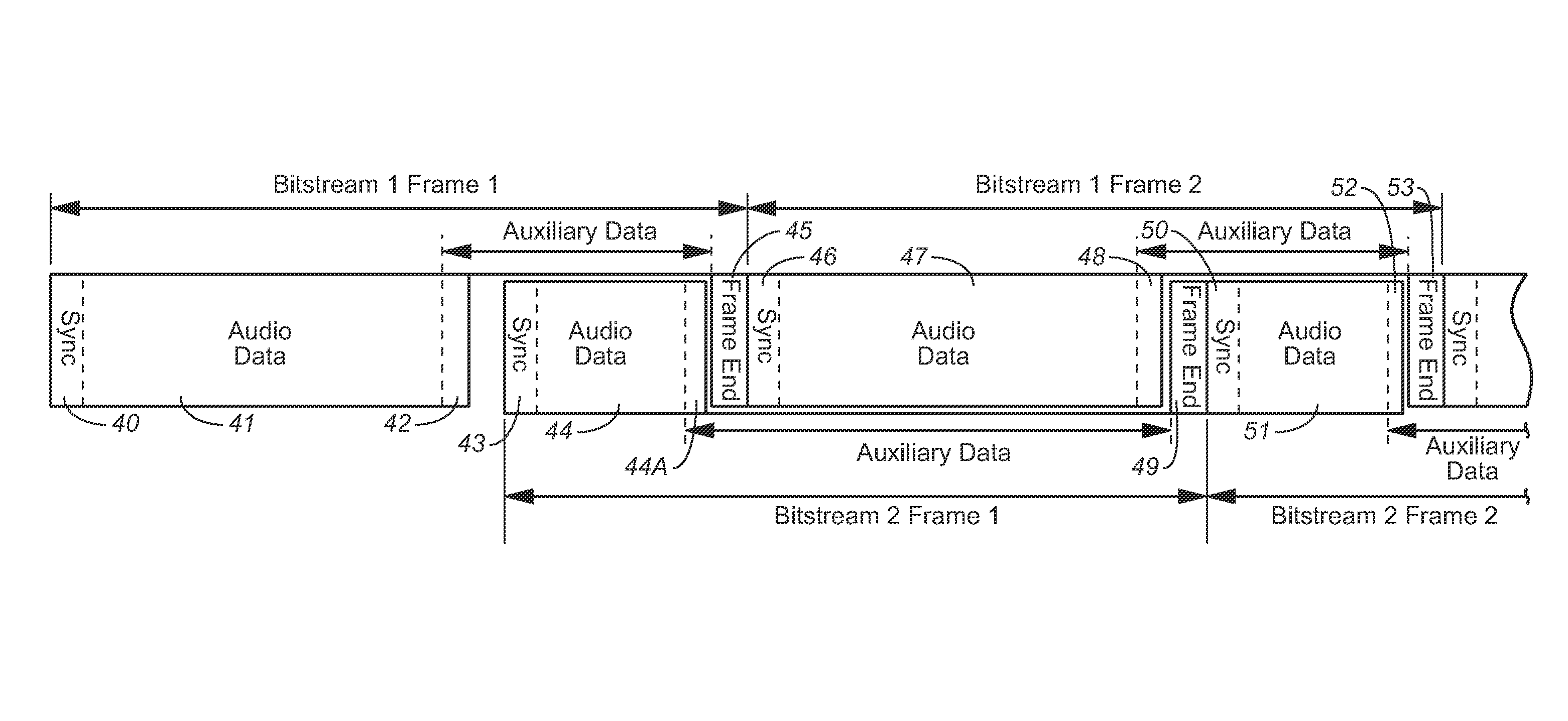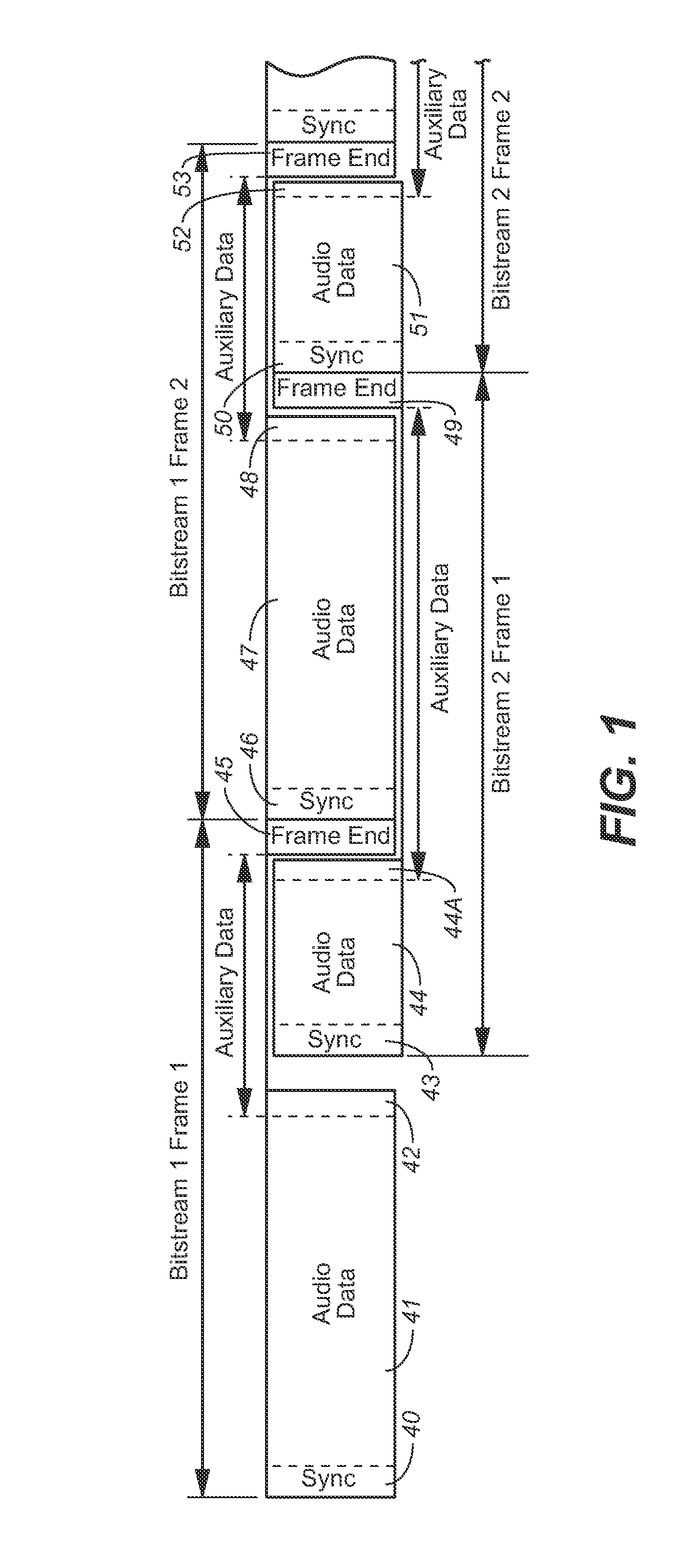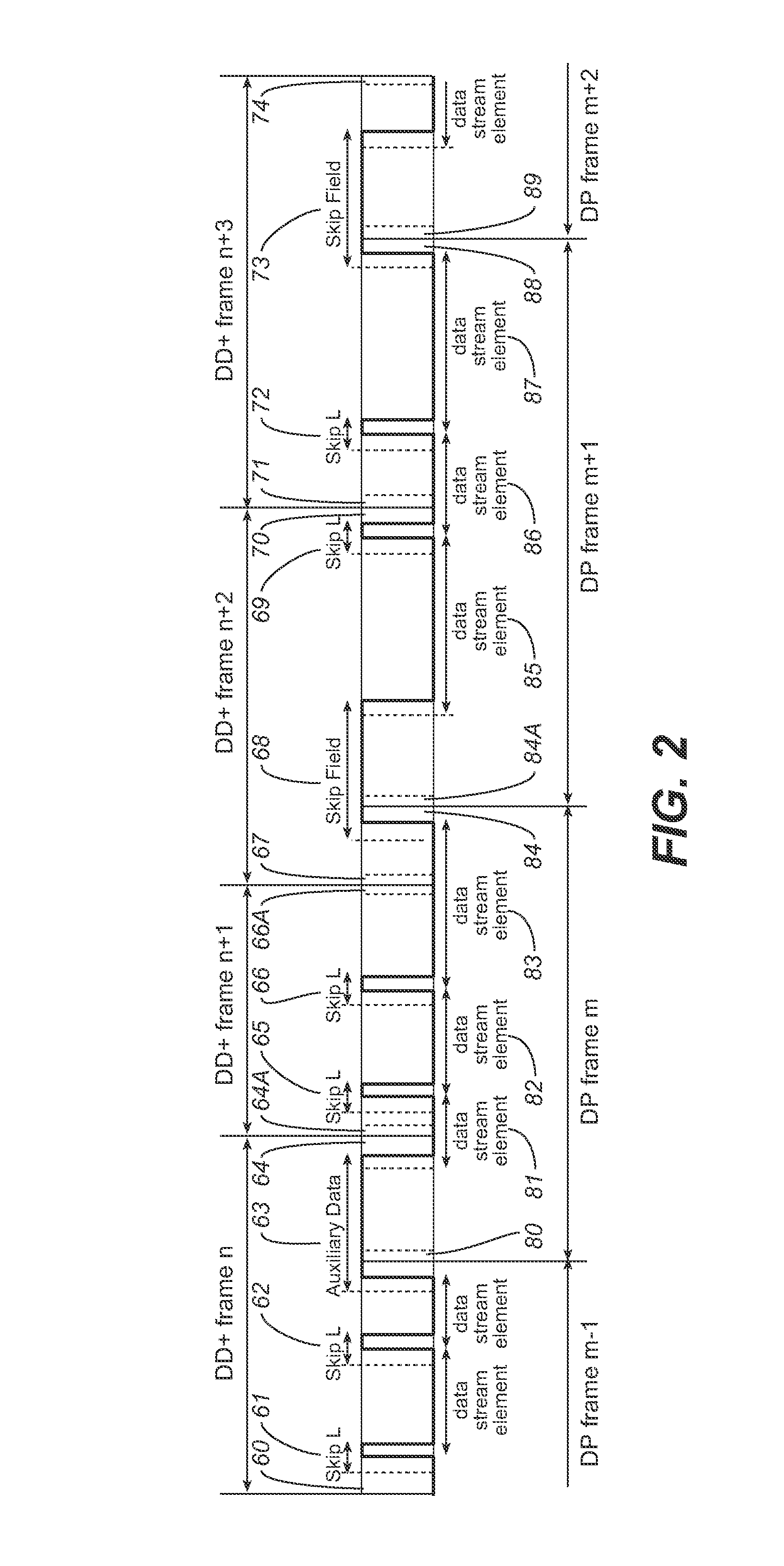Audio encoding method and system for generating a unified bitstream decodable by decoders implementing different decoding protocols
a technology of decoding protocol and audio encoding method, which is applied in the field of audio encoding system, can solve the problems of not decoding a dolby pulse encoded bitstream or a conventional he aac v2 encoded bitstream
- Summary
- Abstract
- Description
- Claims
- Application Information
AI Technical Summary
Benefits of technology
Problems solved by technology
Method used
Image
Examples
Embodiment Construction
[0039]Many embodiments of the present invention are technologically possible. It will be apparent to those of ordinary skill in the art from the present disclosure how to implement them. Embodiments of the inventive system and method will be described with reference to FIGS. 1-9.
[0040]FIG. 1 is a diagram of a portion of a unified bitstream generated by an embodiment of the inventive encoding system. The bitstream includes first encoded audio data 41 and 47 (encoded in accordance with a first encoding protocol) and second encoded audio data 44 and 51 (encoded in accordance with a second encoding protocol), and can be decoded either by a first decoder (which decodes the first encoded audio data and ignores the second encoded audio data) or by a second decoder (which decodes the second encoded audio data and ignores the first encoded audio data). The encoder which generates the FIG. 1 bitstream inserts sync bits 40 into the bitstream just before audio data 41, and control bits 42 into ...
PUM
 Login to View More
Login to View More Abstract
Description
Claims
Application Information
 Login to View More
Login to View More - R&D
- Intellectual Property
- Life Sciences
- Materials
- Tech Scout
- Unparalleled Data Quality
- Higher Quality Content
- 60% Fewer Hallucinations
Browse by: Latest US Patents, China's latest patents, Technical Efficacy Thesaurus, Application Domain, Technology Topic, Popular Technical Reports.
© 2025 PatSnap. All rights reserved.Legal|Privacy policy|Modern Slavery Act Transparency Statement|Sitemap|About US| Contact US: help@patsnap.com



